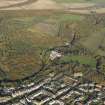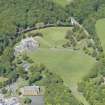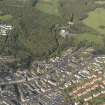Following the launch of trove.scot in February 2025 we are now planning the retiral of some of our webservices. Canmore will be switched off on 24th June 2025. Information about the closure can be found on the HES website: Retiral of HES web services | Historic Environment Scotland
Dalkeith, Musselburgh Road, St Mary's Episcopal Church And War Memorial
Chapel (19th Century) (1843), Outbuilding (19th Century), War Memorial (20th Century) (1920)
Site Name Dalkeith, Musselburgh Road, St Mary's Episcopal Church And War Memorial
Classification Chapel (19th Century) (1843), Outbuilding (19th Century), War Memorial (20th Century) (1920)
Alternative Name(s) Dalkeith War Memorial Window
Canmore ID 212025
Site Number NT36NW 140
NGR NT 33489 67727
Datum OSGB36 - NGR
Permalink http://canmore.org.uk/site/212025
- Council Midlothian
- Parish Dalkeith
- Former Region Lothian
- Former District Midlothian
- Former County Midlothian
NT36NW 140 33489 67727
Duplicate of NT36NW 298
The church is visible on a vertical air photograph (OS 75/292/71-3, flown 1975).
Information from RCAHMS
NMRS REFERENCE:
Architect: William Burn 1843
S Gambier Parry 1919 - memorial chapel
Plans: I G Lindsay Coll, W/294
EXTERNAL REFERENCE:
Scottish Record Office:
RHP 9707 S Gambier Parry 1919 - plans of Memorial chapel
RHP 9717 / 24 & 25 William Burn 1843 - perspective elevation of interior
1-18 1843 - plans, elevations, sections & details
19-23 Benjamin Ferrey - plans, elevations and details of interior
Publication Account (1998)
St Mary’s Episcopal Church stands inside the gates. Built about 1835, as the Bueclcuch family's private chapel, to a design of William Burn and David Bryce, the church houses a unique hydraulic organ and bell-ringing mechanism. The magnificent interior, with Minton tile floors and superb stained glass windows, is a reminder of a wealth and status windows, is a reminder of the wealth and status of the Buccleuch family in the nineteenth century. The chapel was transferred to the congregation in 1958.
Information from ‘Historic Dalkeith: The Archaeological Implications of Development’ (1998).




































